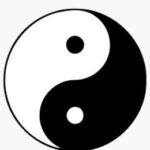How to Read a Book: The Classic Guide to Intelligent Reading
Introduction
I’ve been immersed in a book titled “How to Read a Book,” a title that perfectly aligns with my fervent desire to refine my reading habits and skills. Despite being authored five decades ago; its content remains as pertinent today as it was upon its initial release in 1940. Following a reprint in 1967, twenty-seven years later, it underwent revisions and expansion in 1972, culminating in the final edition I had the pleasure of reading.
Penned by two authors, the primary aim of the book is to equip readers with guidelines for mastering the art and skill of reading. The authors contend that reading for comprehension is an active pursuit, demanding effort, and specific skills. They delve extensively into the nuances of active reading, its components, and strategies for skill development. Comprising 426 pages, each one is indispensable, leaving no room for skipping. At times, I felt compelled to underline every word, phrase, sentence, and paragraph, recognizing the depth of insight woven into its pages. From its opening chapters to its conclusion, the book is replete with fundamental concepts and practical guides on “How to Read a Book.”
Approaching the book with both passion and care, I traversed its contents twice over. The first reading was a cover-to-cover journey to grasp its overarching themes, while the second was a meticulous and critical examination aimed at understanding its nuances. Through deliberate efforts, I ensured that not a single idea escaped me, a goal I believe I’ve accomplished. Armed with a comprehensive understanding, I now feel equipped to assess its merits. Based on my thorough comprehension, I confidently assert that the book stands as one of the premier guidebooks on reading. It merits your valuable time and holds the potential to refine and transform your reading habits. Hence, I offer a brief review below.
Title: How to Read a Book: The Classic Guide to Intelligent Reading
Authors: Mortimer J. Adler and Charles Van Doren
Edition: Completely Revised and Updated
Year of Publication: 1972 Number of Pages: 426 Publisher: Simon & Schuster, Inc.
Place of Publication: New York, London, Toronto, Sydney
Genre: Practical Guidebook
About the Book
Before the current edition, the book was first published in 1940. Then it was republished in 1967 after 27 years. The current edition was published in 1972 after five decades of its second edition. As people’s literacy increased, so did the need for a practical guide on how to read literature. Despite the influences of audio-visual media, which often hinder book reading, the fundamental importance of reading remained steadfast. I wonder: if communication media had a negative impact on book reading five decades ago, how much more prevalent is its influence today? One thing is clear: human curiosity persists in understanding the world. The human mind is restless and unsatisfied with the mere feed of information. Humans are rational beings; thus, they seek to think critically rather than passively absorb information. Reading books facilitates this critical thinking process rather than merely storing data.
Structure and Contents of the Book
The book is divided into four major parts, each corresponding to the four levels of reading discussed within its pages. Part one, titled “The Dimensions of Reading,” is comprised of five sections.
In the first section, “The Activity and Art of Reading,” the authors assert that reading is an active endeavor that necessitates the development of reading skills. While reading can serve various purposes such as gaining information or entertainment, the primary goal for serious readers
is understanding. The authors define the goal of reading as “gradually lifting yourself from a state of understanding less to one of understanding more.”[1]
Moving on to the levels of reading, the second, third, and fourth sections of part one elaborate on each level in detail. The authors define and describe the four levels of reading, providing practical guidance along the way.
- Level 1, Elementary Reading, focuses on foundational literacy skills typically acquired in elementary school.
- Level 2, Inspectional Reading, enables readers to quickly grasp the essence and structure of a book through systematic skimming.
- Level 3, Analytical Reading, represents a deeper engagement with the text, emphasizing thorough comprehension without time constraints.
- Lastly, Level 4, Syntopical Reading, involves skillfully comparing multiple books to discern their relationships, similarities, and differences.
Part, one concludes with the fifth section, where the authors discuss how to become an active reader. They outline the key components of active reading, including asking and answering essential questions during reading sessions. Additionally, they provide guidance on effective notetaking and annotation techniques to maintain reader engagement and activity.
Part Two of the book delves into detailed explanations and guides on the third level of reading
– Analytical Reading. This section comprises seven parts, each dedicated to elucidating the rules of reading analytically. It covers three stages and 15 rules of analytical reading from pages 59 to 163, with a summary provided on pages 163–164.
In the first stage, readers embark on uncovering “What the book is about?” This phase entails categorizing the book according to its subject matter, a process referred to as “pigeonholing.” Understanding whether the book is fiction or non-fiction and identifying various types of
expository works such as history, philosophy, science, and mathematics, is crucial. As the authors assert, “you must know, for instance, whether you are reading fiction – a novel, a play, an epic, a lyric – or whether it is an expository work of some sort.”[2] Transitioning to the second stage of analytical reading, readers interpret the contents of the book, asking and answering the question, “What does the book say and how?”
The third and final stage of analytical reading involves “Criticizing a Book as a Communication of Knowledge.” Here, readers engage in a dialogue with the author, akin to a conversation. However, before offering judgment or critique, it is imperative that readers thoroughly understand the entire book. Active and attentive reading, guided by the rules and skills delineated earlier, facilitates this process of comprehension.
Understanding alone is insufficient; readers must also evaluate or criticize the book. Reading, therefore, is akin to engaging in a dialogue with a living person. As the authors aptly express, “The activity of reading does not stop with the work of understanding what a book says. It must be completed by the work of criticism, the work of judging.”[3] Consequently, the goal of reading is not only to comprehend more deeply but also to critically assess a book based on sound reasoning and evidence.
Part Three of the book provides comprehensive rules and guidelines for reading different types of books. The authors meticulously focus on various classifications, including practical books, imaginative literature (stories, plays, and poems), history, science, mathematics, philosophy, and social science. This section, spanning pages 191 to 296, offers detailed instructions on understanding each type of book. Beginning with descriptions of each category, the authors then offer practical guides and rules to enhance reading comprehension and understanding.
Part Four of the book delves into the highest level of reading: Syntopical reading, which the authors deem as the ultimate goal of reading. They posit that all other three levels serve as the foundation for this advanced form of reading. Synoptical reading is defined as “the reading of two or more books on the same subject”[4], essential for conducting literature reviews in academic research. The authors also elucidate the roles of the second and third levels of reading— inspectional and analytical reading—in Syntopical reading (pp. 313–316). Inspectional reading facilitates the comprehension of multiple books, while analytical reading is crucial for in-depth understanding of a single book. Furthermore, the authors outline five specific steps for syntopical reading (pp. 317–322). These steps include finding the relevant passages, bringing the authors to terms, getting the questions clear, defining the issues, and analyzing the discussions.
Strengths and Weaknesses of the Book
The book stands out for its invaluable practical guidance on how to effectively read a book. Its strengths lie in the authors’ ability to present their ideas in a clear, logical, and coherent manner. The discussions are easily comprehensible, flowing logically and persuasively. The authors effectively employ analogies and examples, particularly in their exploration of the levels of reading. Practical guidelines, steps, and descriptions are presented cohesively, achieving the book’s objective of providing a practical guide to active reading.
However, the book is not without its limitations. One notable drawback is its limitation to the Western region (European) in its examples and assumptions. This poses challenges for readers from other regions such as Africa, Latin America, and Asia, who may find it more difficult to relate to the discussions. Additionally, the book’s exclusive focus on English literature overlooks the vast array of literature in other languages, limiting its applicability to a global audience. Furthermore, some of the guidelines, steps, and stages provided for each level of reading are overly complex due to their lengthy lists, potentially hindering reader comprehension.
Recommendation
I highly recommend this practical guidebook on how to read a book for individuals seeking to enhance their reading habits beyond mere acquisition of facts or entertainment. Whether you’re a beginner reader looking to develop critical thinking skills or an experienced reader aiming to refine your approach, this book offers invaluable insights. It emphasizes the importance of active reading, where understanding, analysis, and explanation take precedence over mere memorization. By prioritizing quality over quantity, readers can cultivate a deeper understanding of the material and stimulate intellectual growth. In essence, this book advocates for reading not just for information, but for comprehension and insight.
[1] Mortimer J. Adler and Charles Van Doren, How to Read a Book (A Touchstone Book), Revised, A Touchstone Book (Touchstone, 1972), 8, http://gen.lib.rus.ec/book/index.php?md5=81f5c5943efcb5f70b7cabeec89afa41.
[2] Adler and Doren, 60.
[3] Adler and Doren, 139–139.
[4] Adler and Doren, 313.



